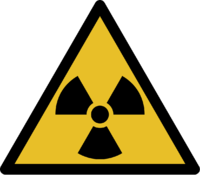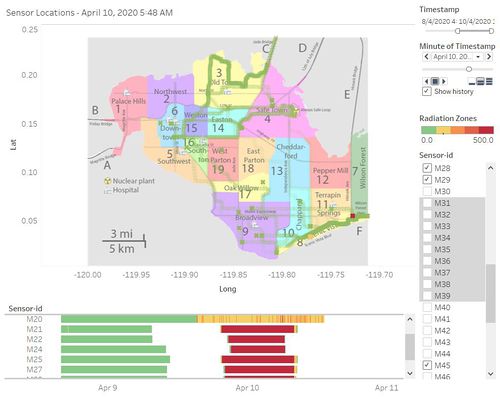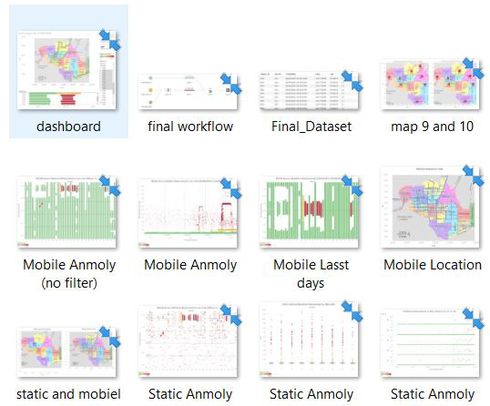Difference between revisions of "IS428 AY2019-20T1 Assign Benedict Then Question 5"
Jxthen.2017 (talk | contribs) |
Jxthen.2017 (talk | contribs) |
||
| Line 42: | Line 42: | ||
[[File:Dashboard.jpg|thumb|left|500px|Dashboard to show the sensors radiation readings coupled with the time & location]] | [[File:Dashboard.jpg|thumb|left|500px|Dashboard to show the sensors radiation readings coupled with the time & location]] | ||
| − | [[File:Static collections.jpg| | + | [[File:Static collections.jpg|490px|thumb|center|Static Collections]] |
<br> | <br> | ||
| − | I used a mix of static collection and dynamic stream of data. Since this dataset mainly drives from the time periods and sensor coordinates. I started plotting a time-lapse visualization dashboard of the sensors' radiation measurements occurring at different coordinates during a time period. This helped me better understand the patterns of the radiation readings and identify areas of concerns. Such as when and which sensors have high radiation readings and where they were located at the | + | I used a mix of static collection and dynamic stream of data as for this dataset. Majority of the time, I used static collections to present areas on concerns and the only time that I feel that I have to use a dynamic stream of data is to show locations of potentially contaminated with reference to the time period. |
| + | |||
| + | '''Dynamic Stream of Data'''<br> | ||
| + | Since this dataset mainly drives from the time periods and sensor coordinates. I started plotting a time-lapse visualization dashboard of the sensors' radiation measurements occurring at different coordinates during a time period. This helped me better understand the patterns of the radiation readings and identify areas of concerns. Such as when and which sensors have high radiation readings and where they were located at the point of time. This helped in answered questions such as which vehicle or which region was potentially contaminated. | ||
| + | <br><br> | ||
| + | '''Static Collect'''<br> | ||
| + | From then, I compiled a static collection of areas of concerns. The static collection consists of time periods when the radiation readings were high, which sensors specifically have high readings and the exact location of when the vehicle got contaminated etc. | ||
Latest revision as of 09:15, 13 October 2019
|
|
|
|
|
|
5.The data for this challenge can be analyzed either as a static collection or as a dynamic stream of data, as it would occur in a real emergency. Describe how you analyzed the data - as a static collection or a stream. How do you think this choice affected your analysis? Limit your response to 200 words and 3 images
I used a mix of static collection and dynamic stream of data as for this dataset. Majority of the time, I used static collections to present areas on concerns and the only time that I feel that I have to use a dynamic stream of data is to show locations of potentially contaminated with reference to the time period.
Dynamic Stream of Data
Since this dataset mainly drives from the time periods and sensor coordinates. I started plotting a time-lapse visualization dashboard of the sensors' radiation measurements occurring at different coordinates during a time period. This helped me better understand the patterns of the radiation readings and identify areas of concerns. Such as when and which sensors have high radiation readings and where they were located at the point of time. This helped in answered questions such as which vehicle or which region was potentially contaminated.
Static Collect
From then, I compiled a static collection of areas of concerns. The static collection consists of time periods when the radiation readings were high, which sensors specifically have high readings and the exact location of when the vehicle got contaminated etc.


